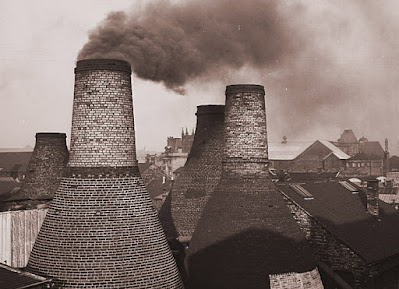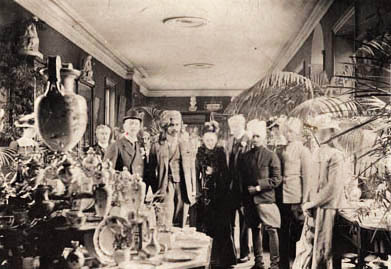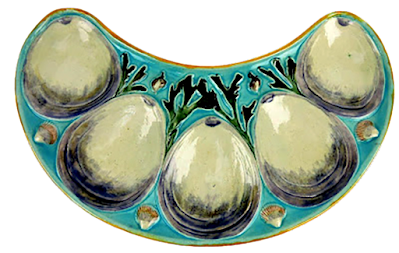For most collectors of majolica, W.P. Copeland is known as the maker of the glorious Lotus Pitcher which we've written about before. Copeland however made far more than just the Lotus Pitcher. They made a full line of majolica wares with impeccable design and craftsmanship.
The history of the Spode Works is a long and complicated one. Established in 1770 by Josiah Spode I as the Spode Works and operated until 1797 by members of the Spode family, William Copeland joined the firm and operated it with Josiah Spode II until his death in 1826. In 1833 his son, William Taylor Copeland joined in partnership with Thomas Garrett and the company operated under the name of Copeland & Garrett. At Garrett's retirement in 1847 William Taylor Copeland purchased the Spode company and operated it alone under the W.T. Copeland name with the Spode name retained as a separate brand. In 1867 Copeland’s four sons joined the firm and the company was renamed W.T. Copeland & Sons.
The company remained in the Copeland family until 1966. In 1970 the company was renamed Spode Ltd. in honor of the company's 200th anniversary. It remains in business today.
It was W.T. Copeland who introduced majolica into the Spode Works earthenware line. The company made vases, decorative urns, posy holders and jardinieres of exceptional quality...
... centerpieces for fruit or flowers...
... wine coolers...
... and teapots, ewers and pitchers, starting with the famous Lotus pitcher and its syrup counterpart.
They made various serving pieces for the Victorian table...
...decorative table holders for sweetmeats, salt or flowers...
... serving pieces of different types like spooners and a cheese bell...
...oyster plates, dessert plates, butter pats and servers.
They made boxes for cigarettes, sardines, etc...









































































































Wonderful article as usual. Many thanks.
ReplyDelete